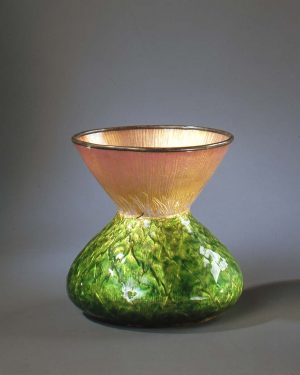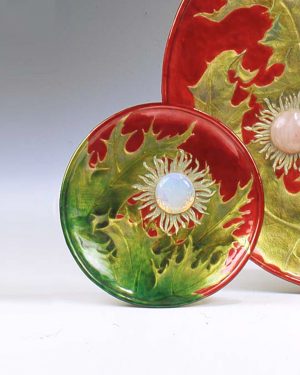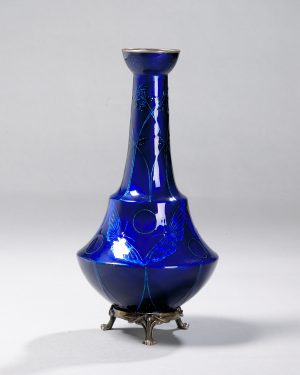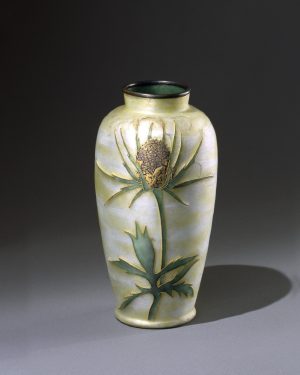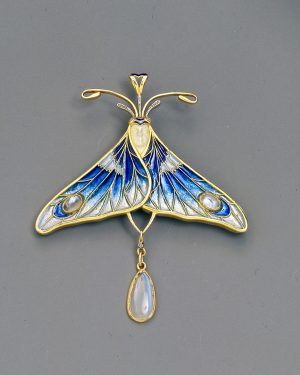EUGENE FEUILLATRE (1870-1916) – “ARTICHAUT FLEURI” VASE, CIRCA 1900
“ARTICHAUT FLEURI” VASE, CIRCA 1900
Copper and translucent enamel. The lower part is decorated with green enamel artichoke leaves highlighted with gold. The upper part is decorated with pink enamel.
Signed.
9 cm. high
Identical model at the Kunstgewerbe Museum in Berlin, acquired at the Exposition Universelle in 1900.
Another identical model in the musée des Arts décoratifs in Paris inv. n°10751.
Together with an advertising label illustrating the piece.
Bibliography
L’Art décoratif moderne, June 1898, Les objets d’art aux salons, Arthur Maillet, ill. page 133.
L’Art décoratif, January 1901, ill. page 166.
Wolfgang Scheffler, Werke um 1900, Kunstgewerbe Museum Berlin, 1966, ill. page 28, n° 29 in the exhibition catalogue.
Sotheby’s Parke Bernet Monaco S.A., 23 juin 1979, lot n°325, identical model in green enamel, the upper part in pale blue and mauve.
Exhibition
Salon de 1898.
French Jewellery of the Nineteenth Century, Wartski, Londres, 13 – 23 June 2001, n°194 in the exhibition catalogue, ill. p. 42.

